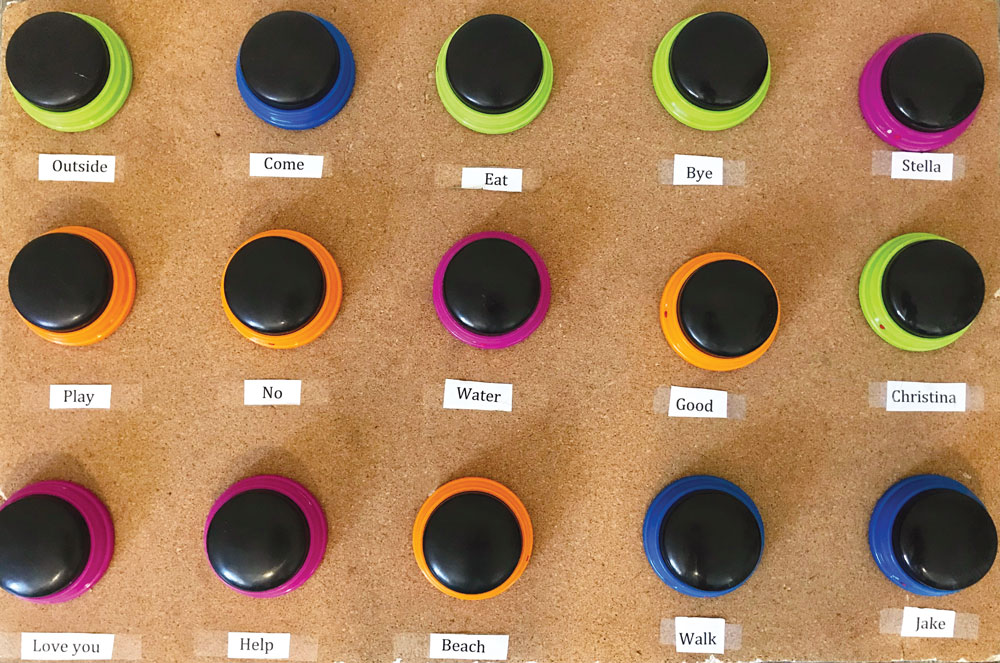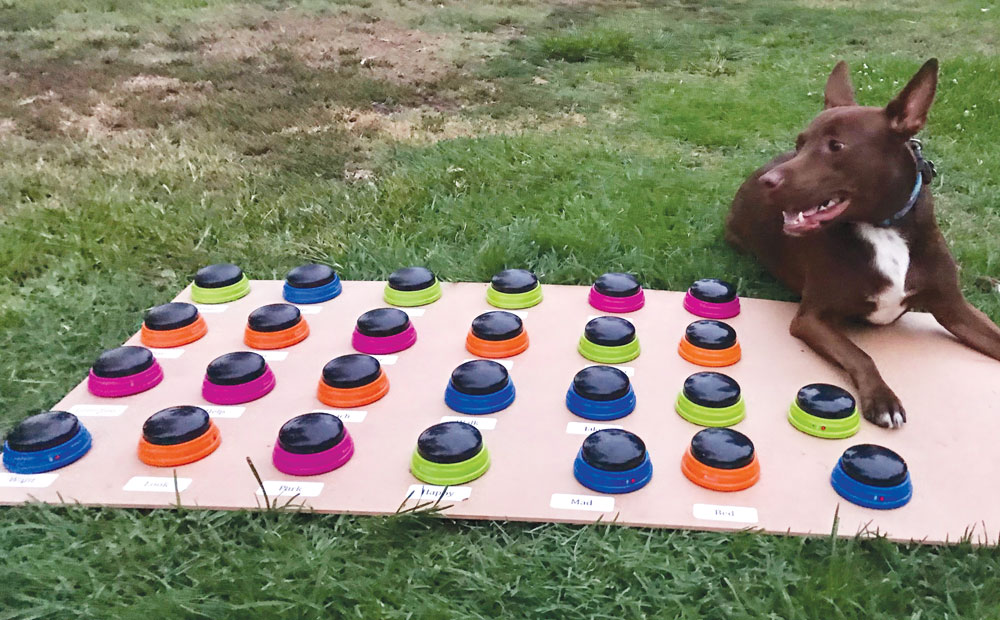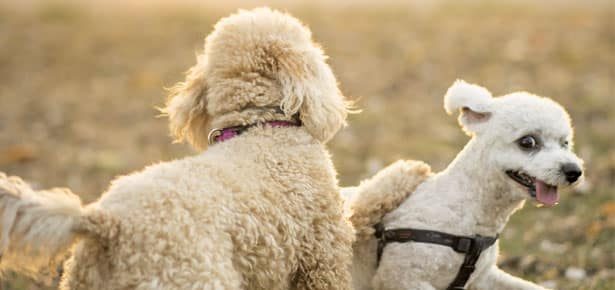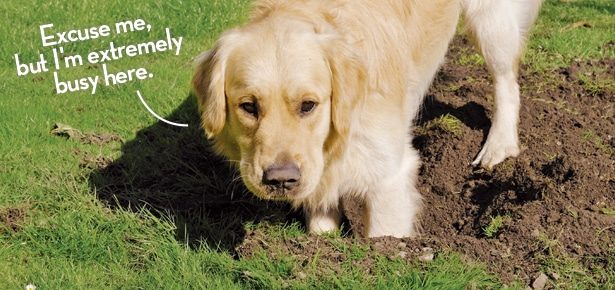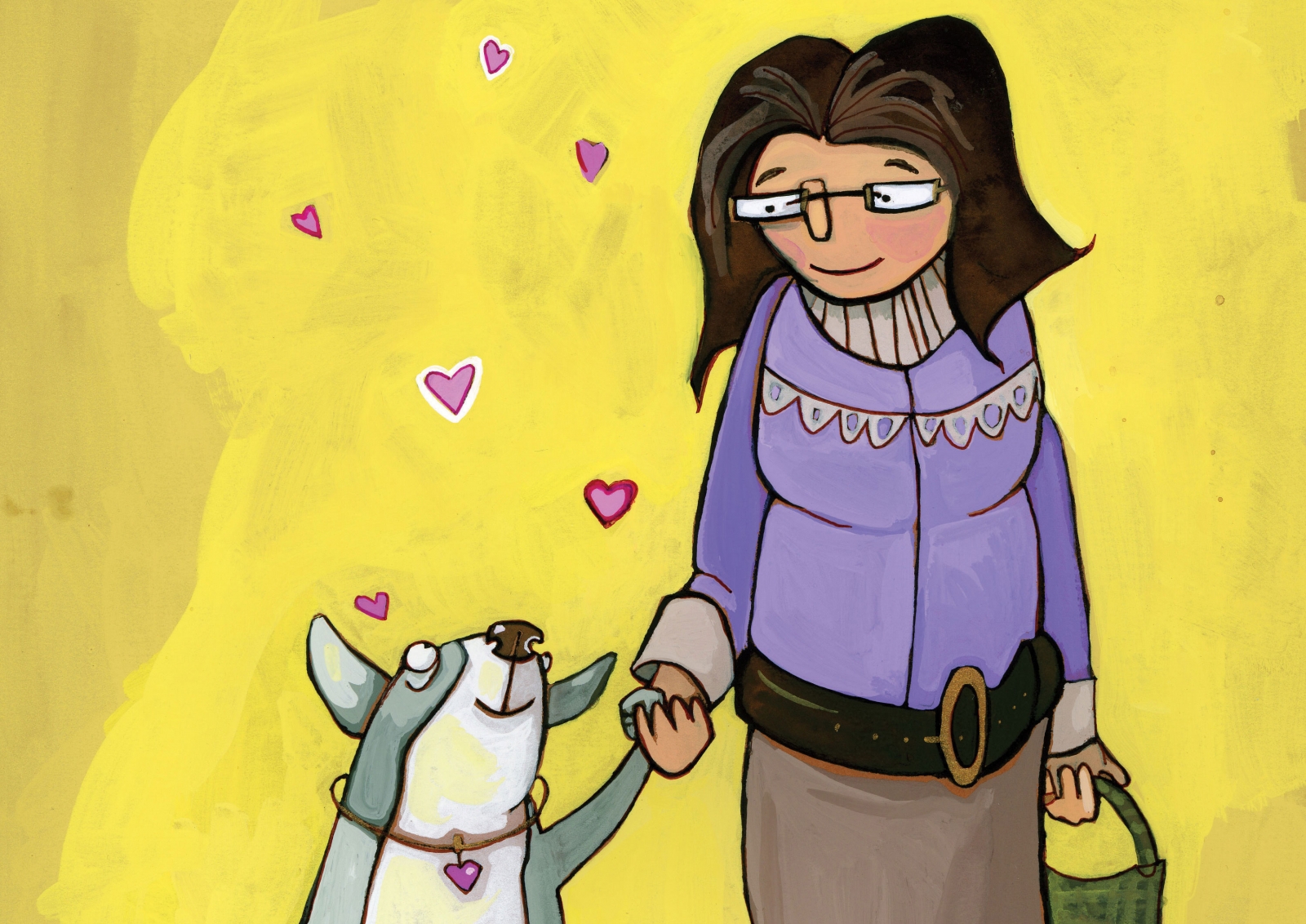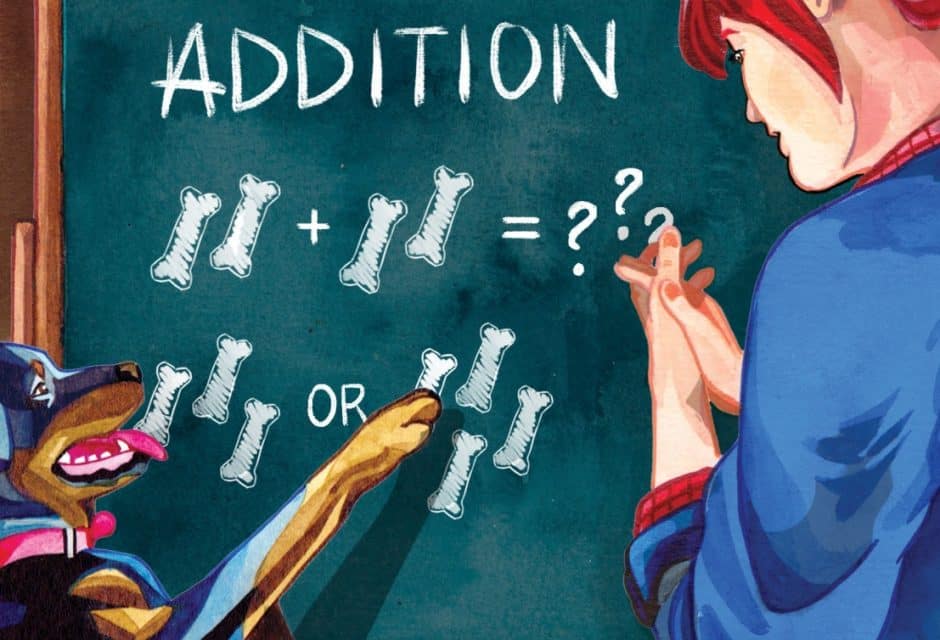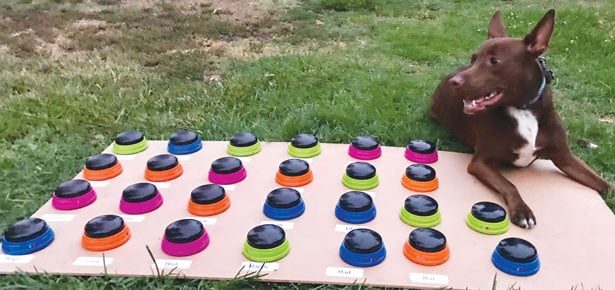
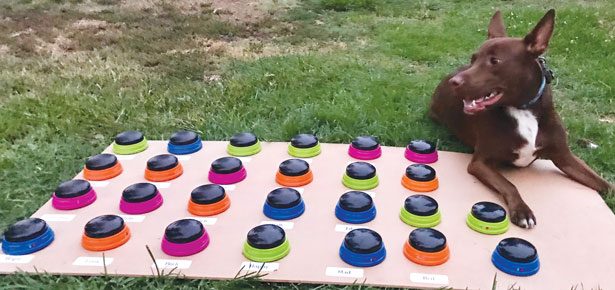
Want To Teach Your Dog To Talk? Speech-language Pathologist Christina Hunger Shows You How
Hunger’s three-year-old dog Stella knows 45+ words and can put together phrases
Imagine being able to talk with your dogs. What a game-changer it would be for them to be able to give voice to requests and feelings. Well, we’re here to tell you it’s possible. Speech-language pathologist Christina Hunger taught her dog Stella to “talk” using a system she developed employing pre-recorded buttons that can be pushed to say words. Stella now knows over 45 words and can create phrases up to five words long. Variations on “outside” are by far her favourite, surprising exactly zero dog people.
“‘Want outside’ and ‘Come play outside’ are a couple of phrases I hear the most,” says Hunger. “She asks ‘When outside’ if we haven’t gone out recently and ‘Who outside’ or ‘Who come’ if she hears someone outside.”
Stella also says “Love you come come” when looking for scratches or a belly rub, Hunger shares. If Stella wants Hunger to leave and give her the toy filled with treats, Stella will say “Bye play eat.” And if Stella gets wet while playing in the rain or with the hose, she’ll say “water play” when she comes back inside.
How far she’s come has amazed even Hunger.
“When I brought Stella home as a puppy, I immediately noticed how much she was communicating to me through her gestures, eye gaze, vocalizations, and body language,” she says. “This inspired me because every day at work as a speech therapist, I was noticing all forms of children’s communication and teaching them how to use words for those concepts. So, I saw potential in Stella very early on, but I still had no idea how far she would progress. I expected that Stella might be able to learn how to use words for a few different simple concepts. I had no idea that by giving her the opportunity to use words, she would progress through stages of language development just like human toddlers would. Stella started using words for different functions of communication beyond requesting, created two-word combinations independently, used short phrases, and created her own phrases for new experiences. It’s incredible to see what can happen when we give another being a true chance to learn.”
Inspired? We talked to Hunger to get the low down on how you too can teach your dog to talk.
Q: Do you think people generally underestimate their dog’s ability to comprehend and communicate?
A: Yes! I think there is a lot of untapped potential in human and dog communication. I feel like we’re still just scratching the surface of knowing how much dogs are understanding and able to communicate with us.
Q: Do you think every dog can enjoy/benefit from talking buttons?
A: I believe every dog has the potential to use words! I think factors such as the dog’s age, breed, personality, and environment play a role in learning outcomes, but having a way to say words can only strengthen dogs’ communication.
Q: How have the talking buttons improved your relationship and deepened your bond?
A: I feel like I have a glimpse into Stella’s mind through her words. Instead of me making assumptions about her thoughts, she is actually able to tell me exactly what she wants to do, when she’s happy or mad, when she needs help or alone time, or when she just wants me to come with and play with her. Because Stella and I have a shared language, our relationship is much more collaborative than the stereotypical owner-dog dynamic. Stella’s thoughts and opinions truly matter to me.
“It’s incredible to see what can happen when we give another being a true chance to learn.”
Q: How often does Stella use the talking buttons?
A: Ever since Stella started using words independently, she has used her buttons to communicate with us every single day. She uses words to let us know exactly what she wants to do, make observations about her environment, ask simple questions, answer questions, and much more! I love hearing all that she has to say about her days.
Q: How best to get started with talking buttons for dogs?
A: I would recommend starting with about four different words for simple functions that you and your dog experience every day. I started with outside, play, water, walk. These were all words I was saying to Stella each day, words that were frequently occurring, and concepts she was already communicating about. After you pick your words and program each into a button, start narrating your dog’s actions! Verbally say “play” while your dog is playing, and also say “play” with your dog’s button. Each time you do that, you are showing your dog how she can say that word too, if she wants. My book has a ton of tips and suggestions for getting started with your dog, and how to build from the foundation to more complex concepts later on!
Watch This Incredible Video of Stella the Dog Talking
Join the newsletter and never miss out on dog content again!
"*" indicates required fields
By clicking the arrow, you agree to our web Terms of Use and Privacy & Cookie Policy. Easy unsubscribe links are provided in every email.
